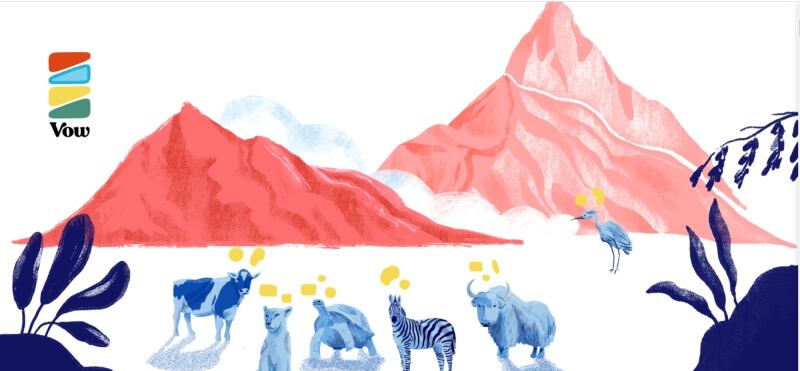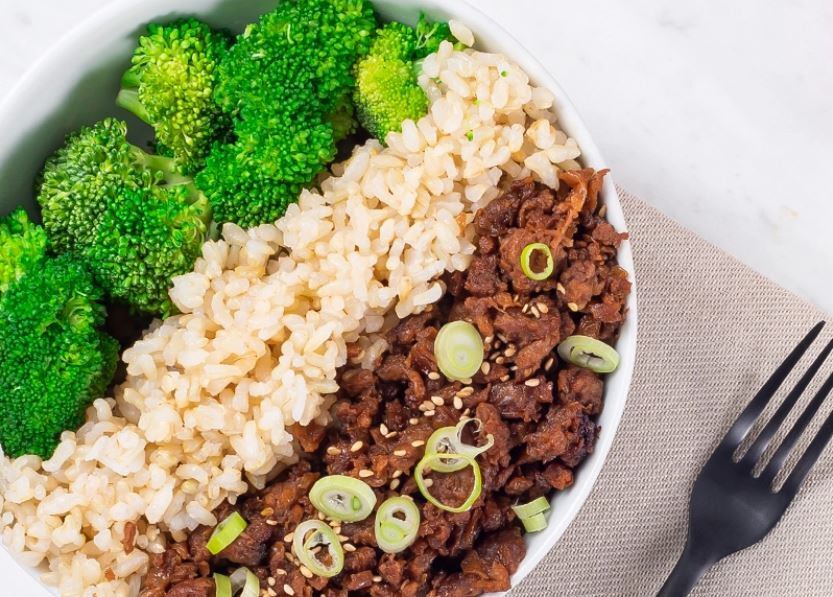According to Vow Co-Founder and Chief Commercial Officer Tim Noakesmith, most of the meat consumed by the human population today comes from just five different animal sources: Chicken, cattle, fish, pigs and sheep.
“Our sources have been so limited untill now because these animals are the ones that met the domestication criteria thousands of years ago [and made their way into our food systems] – but in this day and age, technology means we are no longer restricted by previous restraints,” he told FoodNavigator-Asia.
“These five animals make up just some 0.02% of the animals out there, so statistically speaking, it is highly likely that the best culinary experience to be found is not within these five animals.
“There have been various historical reports of how delicious the meat of the Galapagos tortoise is, or the rich fat of the dugong – but if we tried to turn these animals into food, the likelihood is that we would decimate their populations.
“So Vow is trying to create a new category of food that is not just replicating existing meat options today, but also offering a unique culinary experience, bringing more products that can appeal to different consumer groups in different markets and offer more choice.”
Vow’s first creation since the firm was launched in April 2019 has been a cell-cultured kangaroo meat dumpling – the first time a cell-based version of an undomesticated animal meat has ever been produced.
“The aim was to prove that this can be done with unique animals which are undomesticated. Kangaroo meat is a very functional meat, with lots of lean muscle and very high in protein,” said Noakesmith.
Although he declined to reveal the current price of production per kilogramme of Vow’s kangaroo meat, he told us that this is expected to be ‘comparable or less when compared to regular meat in the next seven to 10 years’.
“We’ve already seen massive reductions since we started [last year], somewhere around 10 times more cost efficient than the beginning,” he said.
“Based on our modelling, there really is no reason that cultured meat cannot be cheaper than regular meat. I believe that the advancements of technology for optimizing processes and growth factors and so on definitely allow for this.”
Meat selection – function and not origin
Vow is currently working on developing an elaborate cell library, so as to take cell lines from here and develop these into food products under different brands in the future.
This is expected to contain both traditionally domesticated and erotic animal cell lines, and there are already seven which the firm has successfully grown meat from. Although Noakesmith kept mum on the specific species, apart from kangaroo the firm’s website has a centerpiece with probable ‘target animals’ such as the Galapagos tortoise, lion, yak, zebra, cow and heron.
“[Why we’re creating this broad range is because we] are working towards a future where, in maybe 20 years, the meat and protein aisle at supermarkets is no longer categorized based on animal of origin, but more on functionality and attributes, so consumers can buy based on these and perhaps a specific brand linked with these instead of what animal it is from,” he said.
In addition, unique product formats are also on the menu in Vow’s plans instead of offering common traditional meat formats such as nuggets or steaks.
“There is a concept called the ‘Uncanny Valley’, which basically means that when you offer people something they are used to but slightly different, they are likely to have a negative reaction to it as they expect the same experience,” said Noakesmith.
“If we offer them something new, a new meat via a new format and give them a completely different experience, there won’t be this prior comparison [or the instinct to reject the new experience].”
Technology
Although similar to other cell-based firms in that Vow also has to focus on cell line generation, media optimization, bioreactor development and cell cycle maturation, Noakesmith added that Vow is also very much focused on customising its own in-house technology.
“We definitely are focused on creating the best software and technology to apply to biotechnology and create our products – this goes across things like using custom robotic automation to reduce costs, comparative data analysis, custom image acquisition, our own data collecting and processing software and so on,” he said.
“This technology is what will enable us to analyse and meet the specific needs of different consumer groups in different consumer markets, then create the right products, brand accordingly and even scale these up and down according to consumers’ needs.
Future
Moving forward, Vow will first be looking at ‘low volume, high-impact’ food experiences to prove their concept, and it looks likely that foodservice will be the initial route for this.
“We want to work with high-end chefs with our first products to prove that these unique meats can be used to provide decadent experiences without needing to consider the inputs and sources of the meat,” said Noakesmith.
“After that, then we’ll work on our own branded products and bringing these to market, then to mass market.
“This strategy means that we’re both monetising and also derisking each stage of our development – by first doing the testing, then iterating based on feedback from consumers, then taking only the best-performing items from the bunch and commercialising these. That’s our path to creating a house of well-performing products and brands.”





